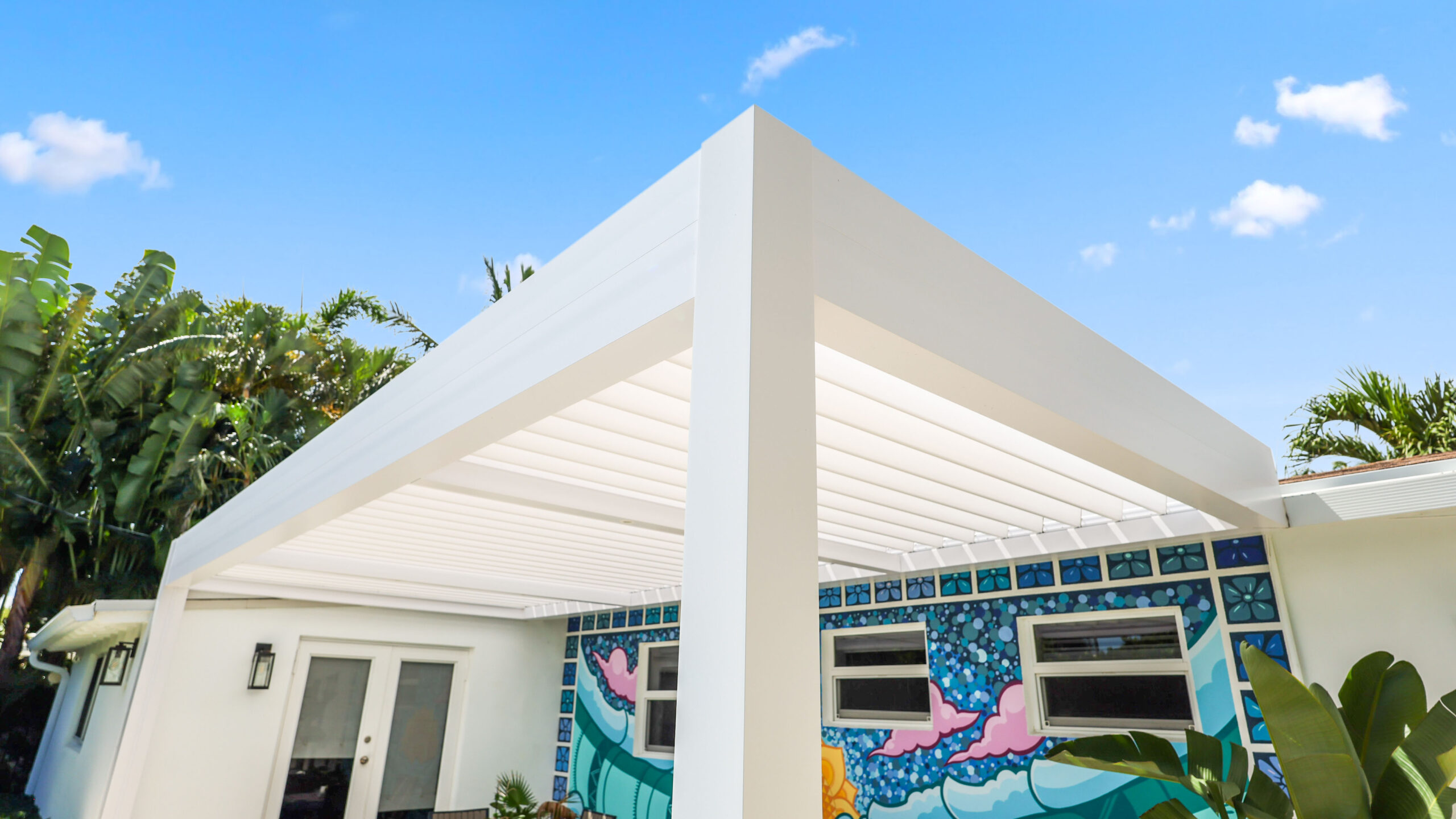

When you imagine your perfect backyard in South Florida, a pergola almost always completes the picture. It frames the space, turning mornings into quiet retreats and evenings into effortless gatherings. Yet one design decision defines how your pergola performs and how it feels year-round: whether to choose a sloped pergola roof or a flat one.
A truly flat pergola roof—without a subtle pitch—can cause water to pool, creating stress on the structure, potential leaks, and unnecessary maintenance. Over time, this can compromise the integrity of the system.
In contrast, a thoughtfully engineered sloped pergola roof allows rainwater to drain efficiently, directing it into discreet channels and downspouts. Our pergolas are designed with fully integrated gutter systems, moving water away while protecting both the structure and your outdoor living area.
Motorized and modular designs feature gapless louvers and integrated gutters that form a tight seal when closed, shielding your patio from South Florida’s frequent rain and wind.
For South Florida homes, slope isn’t just a design choice—it’s essential to comfort, resilience, and long-term investment. Afternoon downpours, hurricane-season rains, and year-round humidity all demand careful planning.
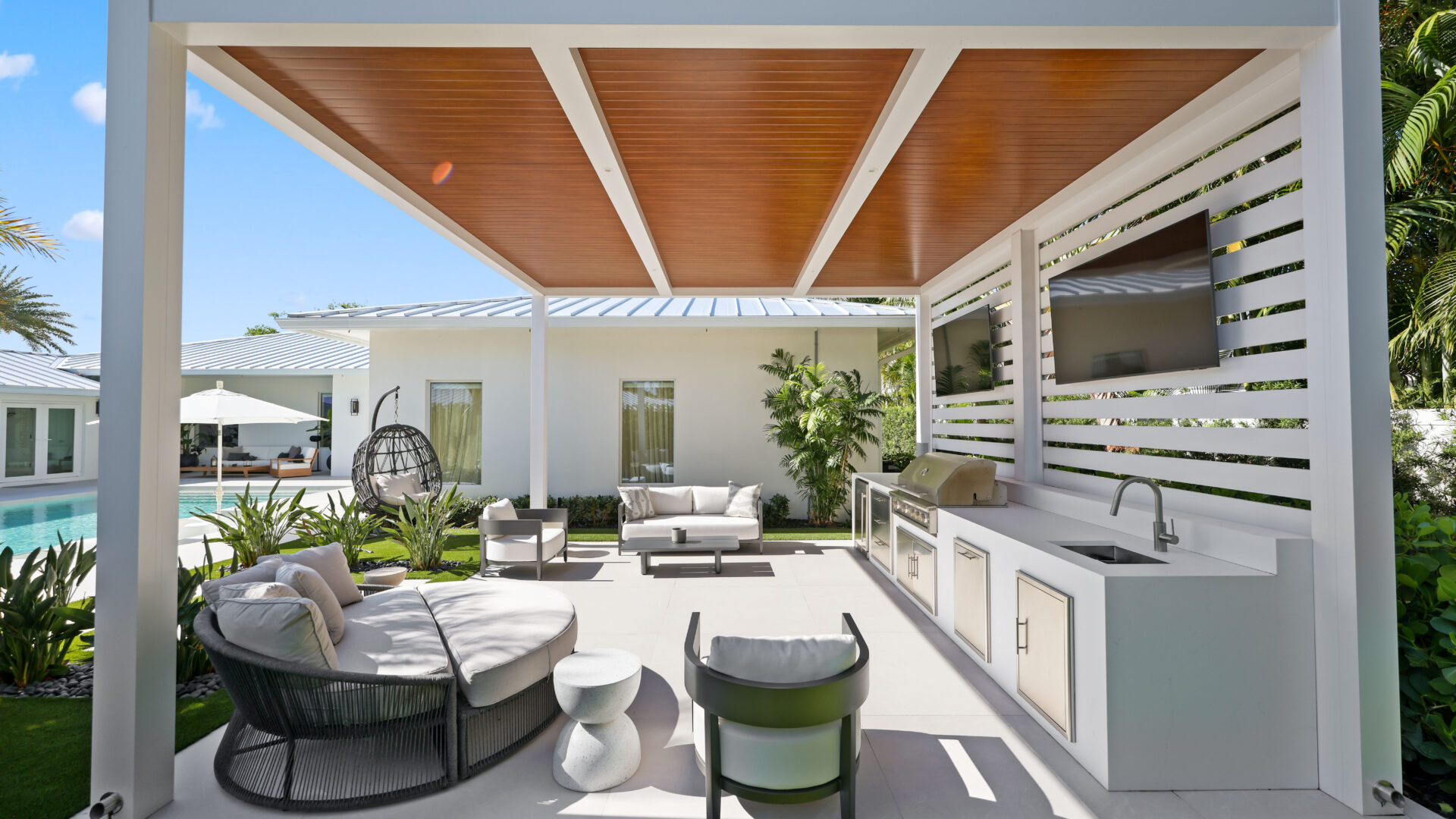
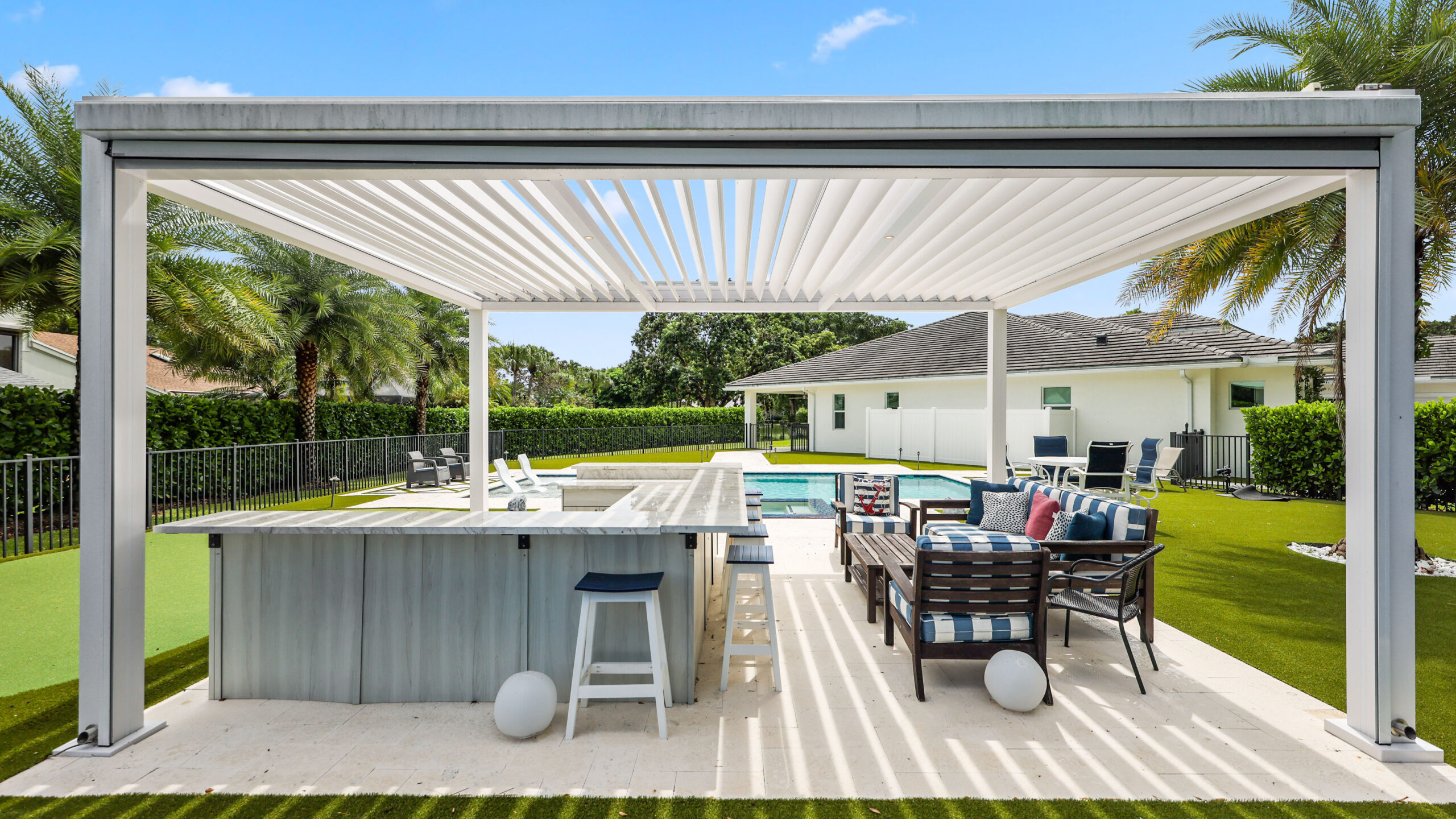
Pergola roofs aren’t just architectural features; they dictate how well your outdoor space endures the climate. In dry regions, the difference between flat and sloped is mostly aesthetic. In South Florida, it’s a matter of performance and peace of mind.
Here, rain can shift from drizzle to downpour in seconds. Without a slope, a flat roof can collect water, leading to stains, corrosion, or leaks. And while aluminum is famously durable, standing water accelerates wear on any surface.A sloped pergola roof solves this elegantly. By guiding water to integrated drainage, it keeps the structure clean, dry, and low-maintenance. For homeowners who want to enjoy their pergola without constant upkeep, slope becomes an investment in ease.
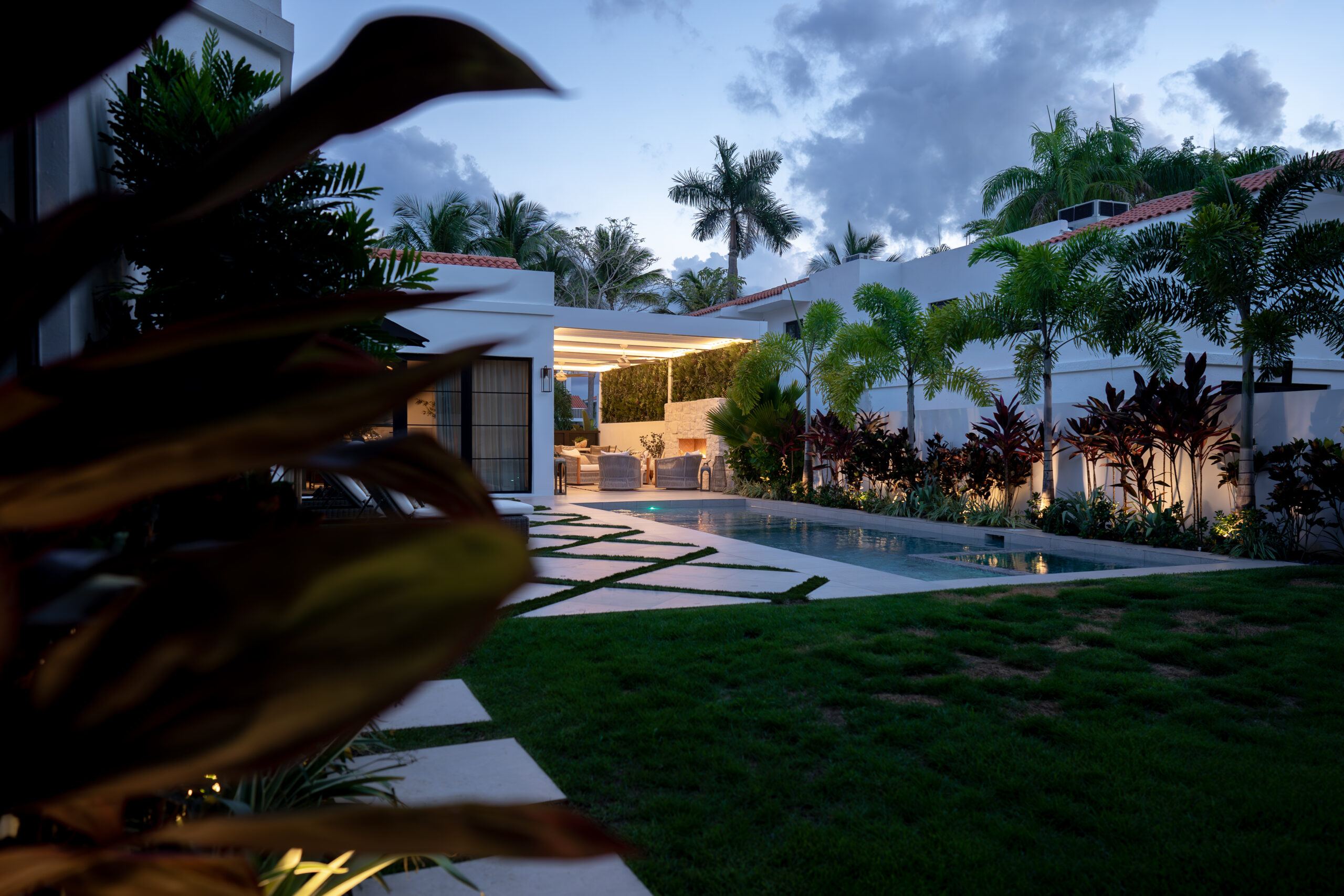
The benefits of a sloped pergola roof include:
The only design consideration is coordination: one side of the roof sits slightly higher than the other. For most homes, this is an opportunity, creating a custom look that feels intentional and beautifully tailored.
A simple formula helps calculate roof slope:
Slope = 1/16” to 1/8” per linear foot toward drainage points.
For example, if a pergola is 10 feet long, the slope should be between 5/8” and 1-1/4” to ensure proper water runoff.
When SYZYGY Global designs pergolas in Palm Beach, Boca Raton, or Miami, we balance design aesthetics with the realities of South Florida’s climate.
Your choice of roof style shapes not only how your pergola looks—but how much attention it will need over its lifetime.
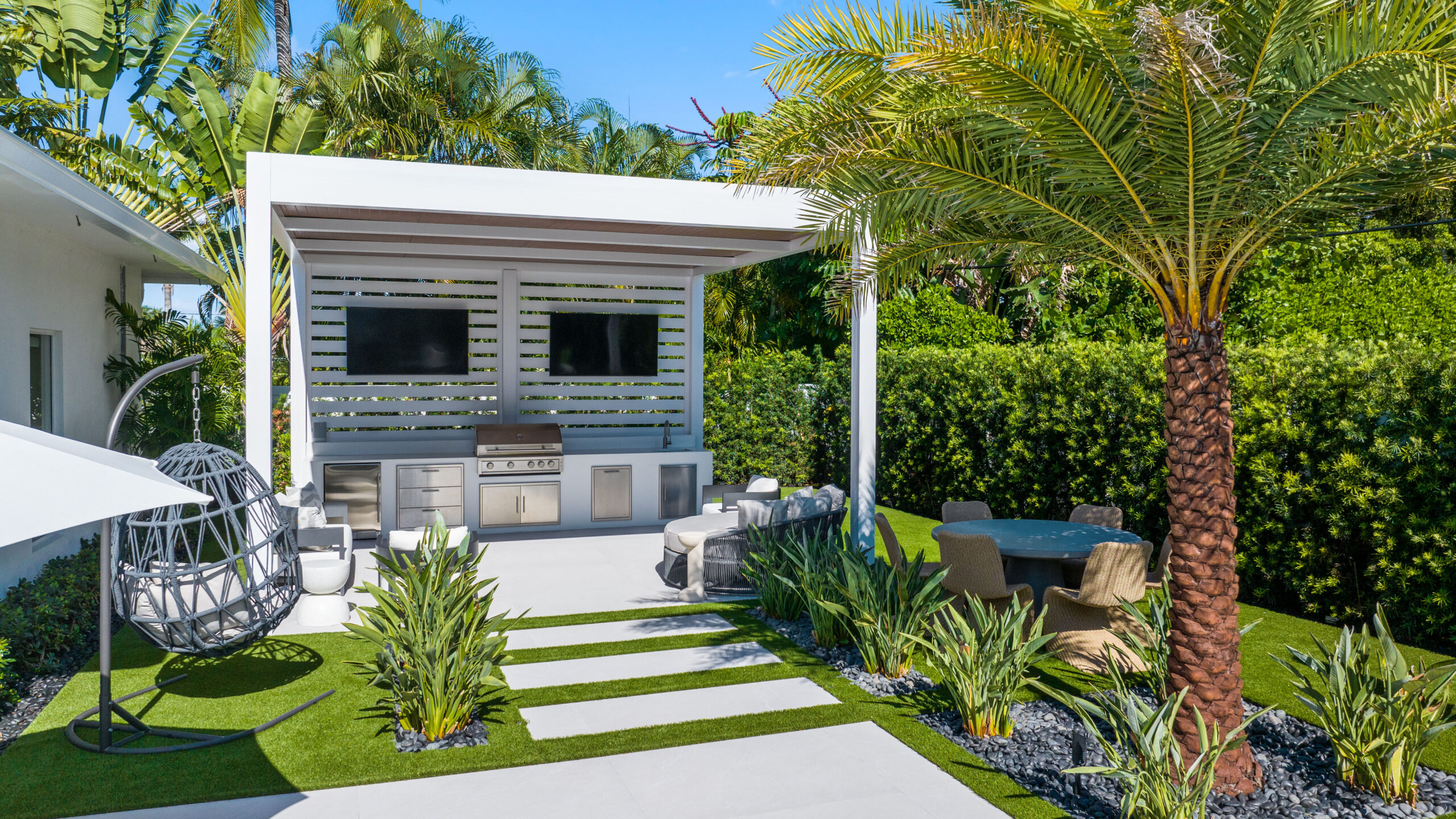
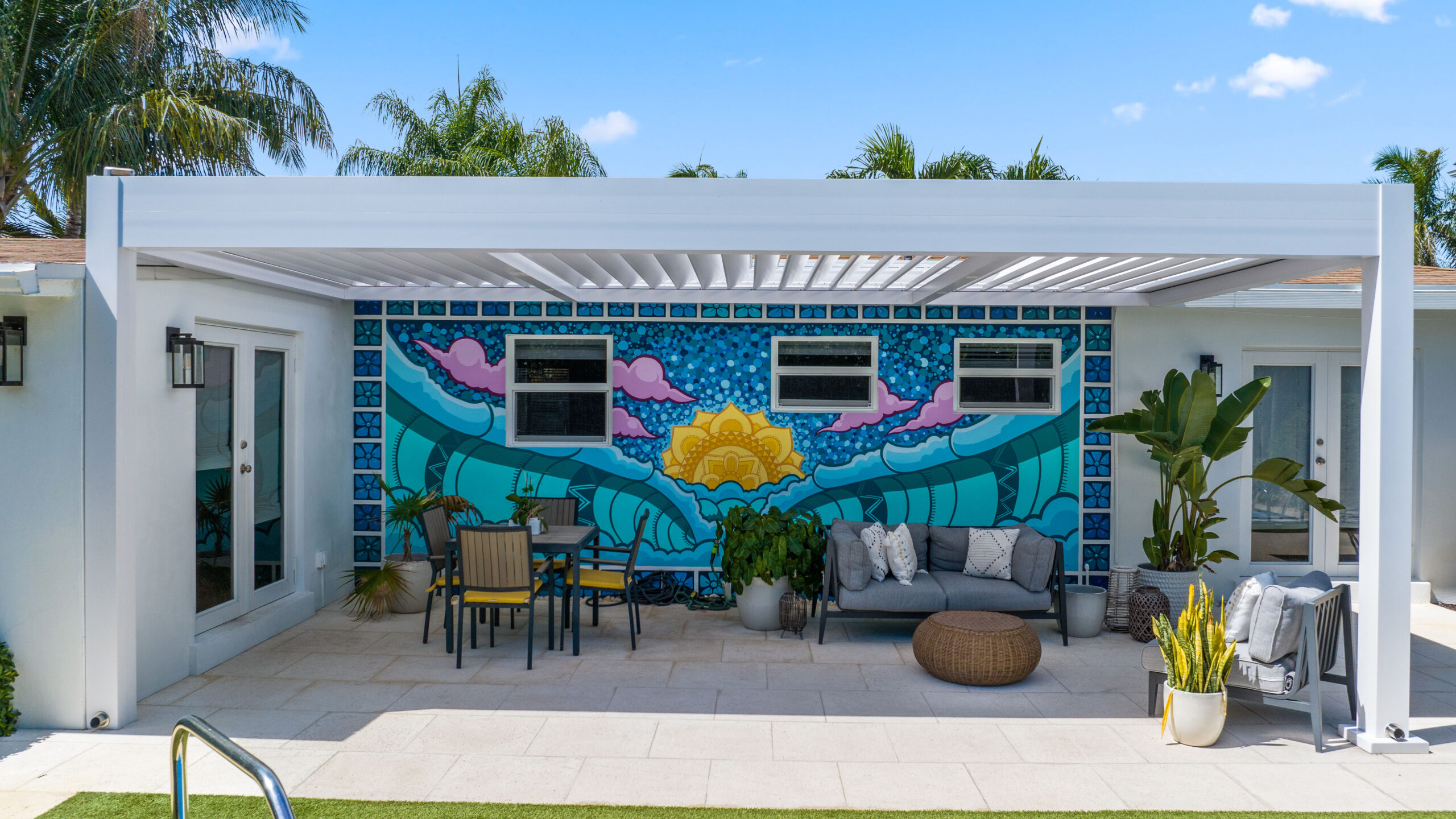
Flat pergola roofs have undeniable style. Their minimalist profile works beautifully with mid-century and contemporary homes:
But “flat” is a misnomer. Even flat pergola roofs require a hidden slope for drainage. Without it, tropical rain can collect quickly, creating maintenance headaches instead of a worry-free space.

Our philosophy is to merge luxury outdoor design with engineered performance. Every pergola includes integrated drainage, whether the roof is visibly sloped or designed to appear flat.
What this means for South Florida homeowners:
Crafted from premium aluminum and finished with marine-grade powder coating, our pergolas are rust-resistant, hurricane-rated, and low-maintenance—perfectly suited for coastal climates.
In the end, the simplest truth is this: in South Florida, a sloped pergola roof is the most reliable choice. It offers easy drainage, timeless style, and effortless longevity. Flat pergola roofs can deliver striking modern aesthetics with the right engineering, but slope provides the confidence of a system designed to perform beautifully through years of sun, storms, and celebrations.
At SYZYGY Global, we combine structural expertise with refined design, building pergolas that elevate outdoor living while standing strong against the South Florida climate.

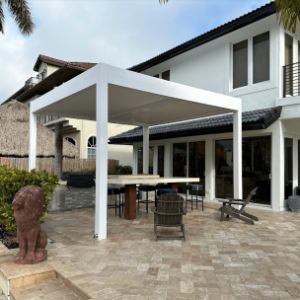
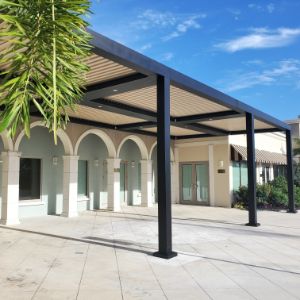

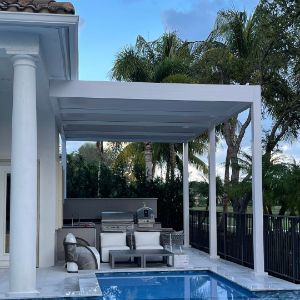
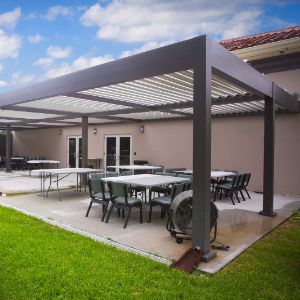
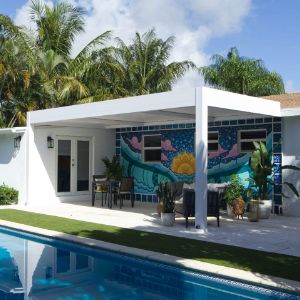



















Name
